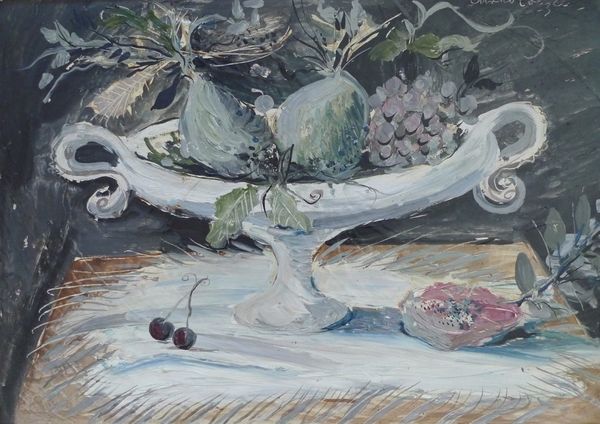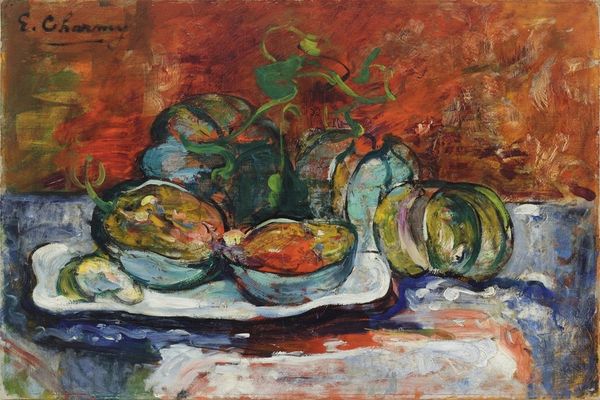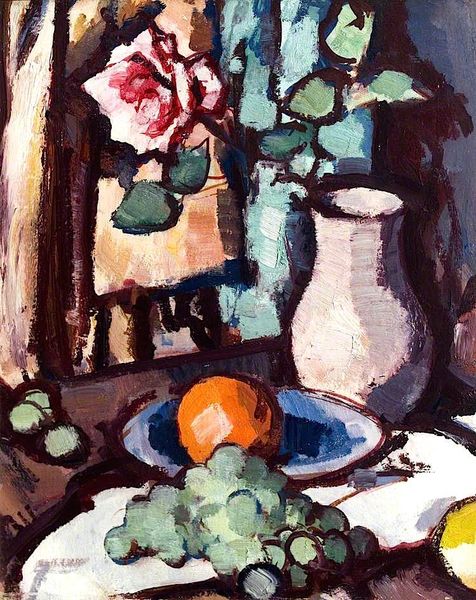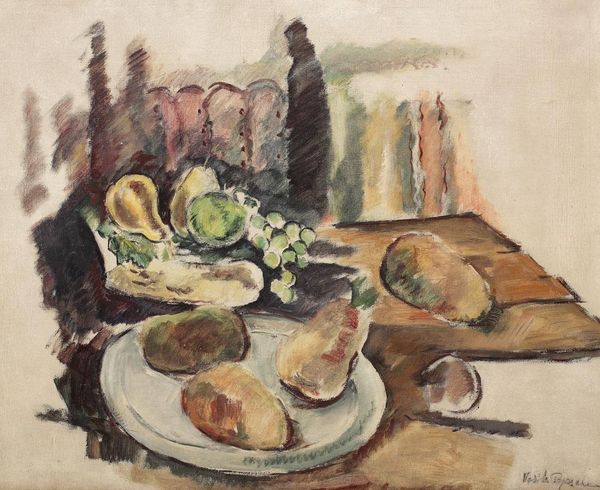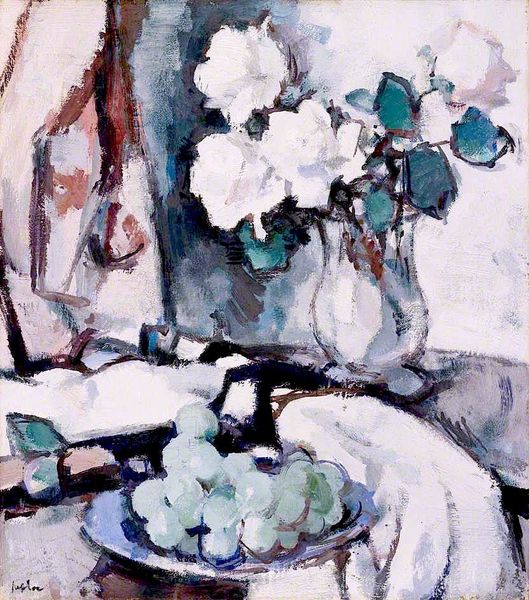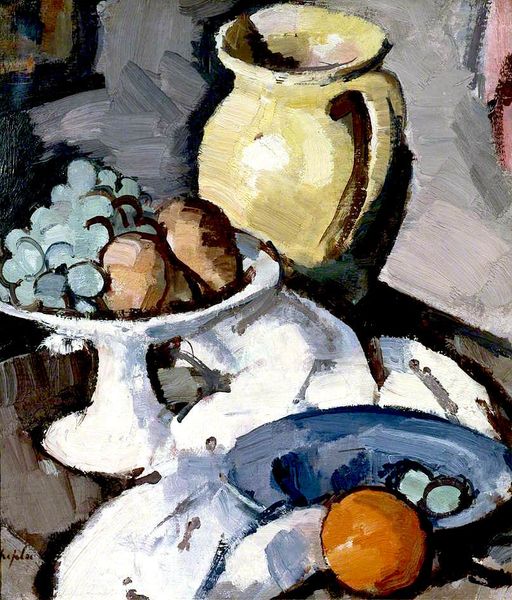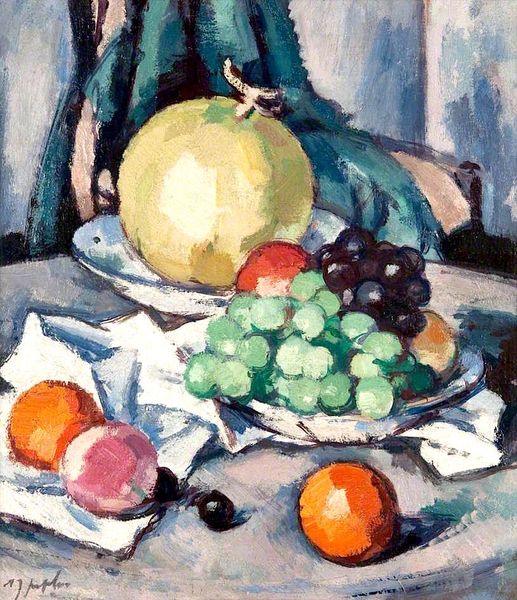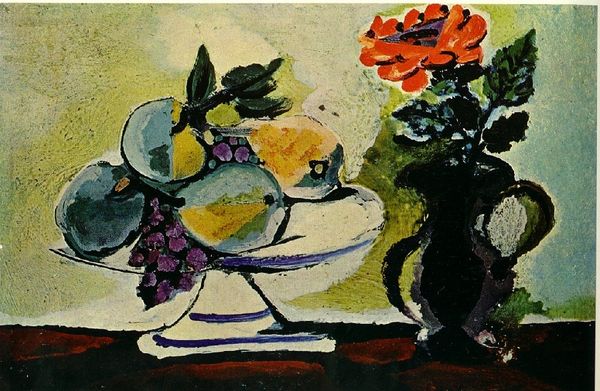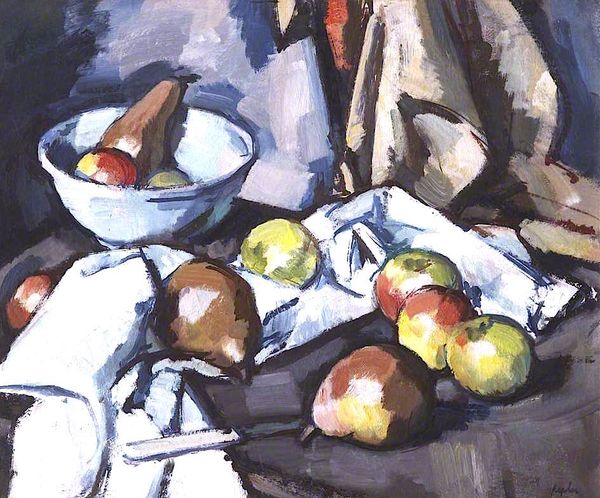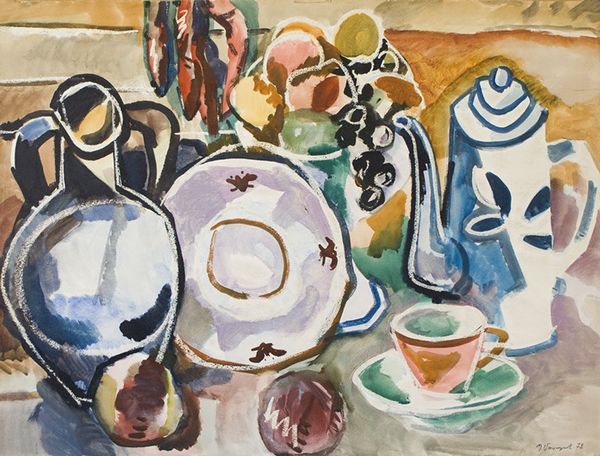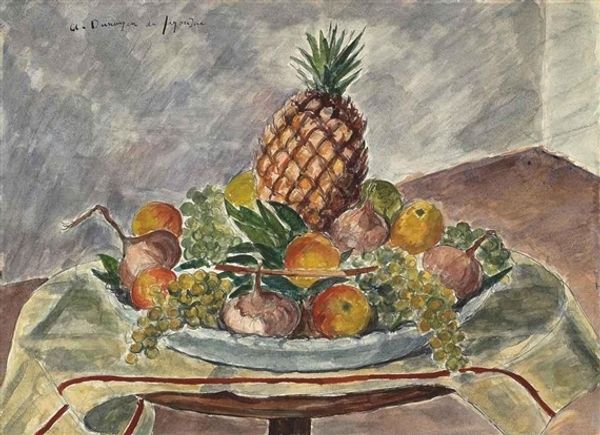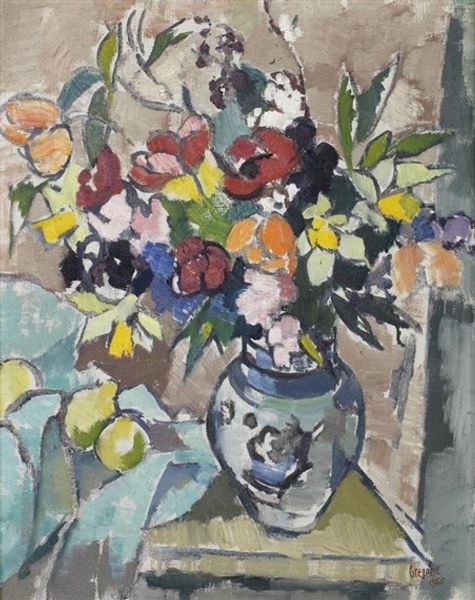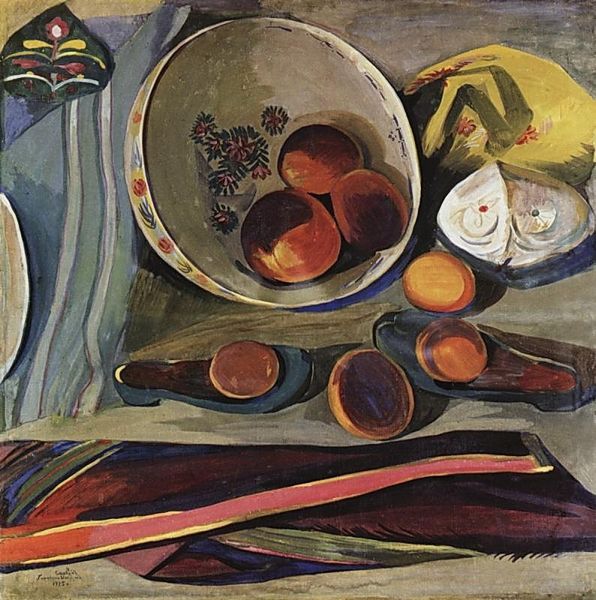
oil-paint
#
oil-paint
#
landscape
#
oil painting
#
post-impressionism
#
modernism
Copyright: Public domain
Curator: So, here we have Paul Cézanne’s "Still Life with Water Jug," an oil painting completed in 1893. It currently resides here at the Tate Britain. Editor: It has that wonderful, quiet feel of a paused moment. There's something both monumental and intensely private about it. The brushstrokes feel deliberate, searching almost, as though Cézanne wasn’t just painting objects, but the very essence of seeing them. Curator: Exactly. Cézanne was, of course, pivotal in challenging the conventions of representation at the time. He moves away from trying to faithfully capture the real world, and it shows that through geometric forms, planes, and a real interest in structure, which deeply influenced later movements like Cubism. Editor: I'm particularly drawn to the way the light seems to fall—or perhaps more accurately, hover. It’s not quite naturalistic. And there is something inherently strange in the color choices too—the violet shadows playing against those ruddy oranges and the austere white of the linen. Curator: He was actively interested in exploring how we perceive depth, breaking from traditional single-point perspective. See how the planes of the table are slightly off, challenging the viewer's understanding of space? This makes it modern. Editor: The objects themselves – that water jug, the scattered apples - they feel strangely significant, don't they? Almost like characters in a silent drama, each with its own role to play in this domestic theater. Curator: You could see how Cézanne approached a new way of viewing and thinking about traditional still life. With “Still Life with Water Jug”, he’s engaging in art and a commentary on modernity. Editor: Ultimately, Cézanne takes mundane items, lifts them out of ordinary existence, and invites us to reconsider how we truly look at the world. Curator: A remarkable moment captured on canvas. Editor: Yes, indeed.
Comments
No comments
Be the first to comment and join the conversation on the ultimate creative platform.
